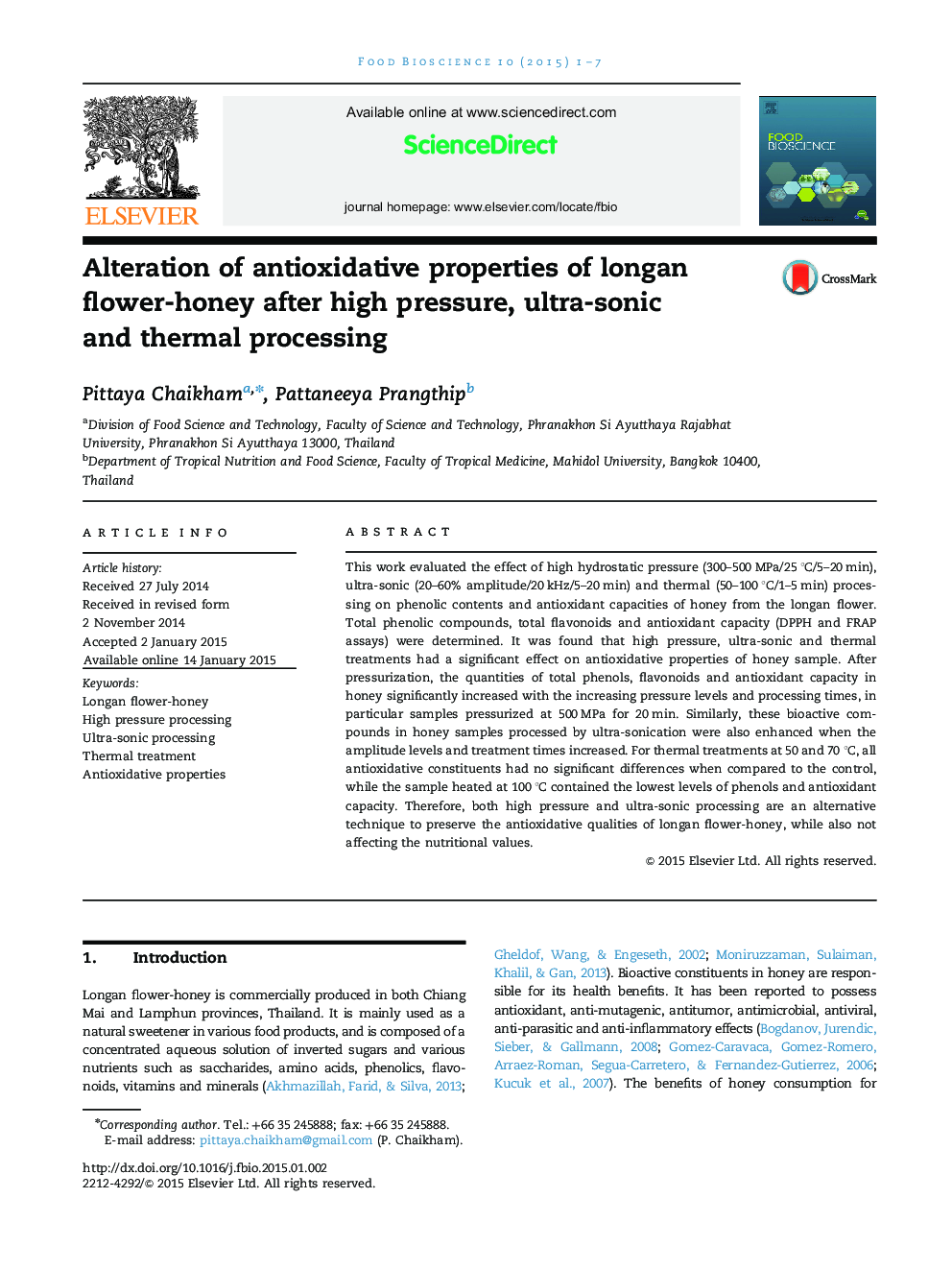| Article ID | Journal | Published Year | Pages | File Type |
|---|---|---|---|---|
| 19722 | Food Bioscience | 2015 | 7 Pages |
This work evaluated the effect of high hydrostatic pressure (300–500 MPa/25 °C/5–20 min), ultra-sonic (20–60% amplitude/20 kHz/5–20 min) and thermal (50–100 °C/1–5 min) processing on phenolic contents and antioxidant capacities of honey from the longan flower. Total phenolic compounds, total flavonoids and antioxidant capacity (DPPH and FRAP assays) were determined. It was found that high pressure, ultra-sonic and thermal treatments had a significant effect on antioxidative properties of honey sample. After pressurization, the quantities of total phenols, flavonoids and antioxidant capacity in honey significantly increased with the increasing pressure levels and processing times, in particular samples pressurized at 500 MPa for 20 min. Similarly, these bioactive compounds in honey samples processed by ultra-sonication were also enhanced when the amplitude levels and treatment times increased. For thermal treatments at 50 and 70 °C, all antioxidative constituents had no significant differences when compared to the control, while the sample heated at 100 °C contained the lowest levels of phenols and antioxidant capacity. Therefore, both high pressure and ultra-sonic processing are an alternative technique to preserve the antioxidative qualities of longan flower-honey, while also not affecting the nutritional values.
